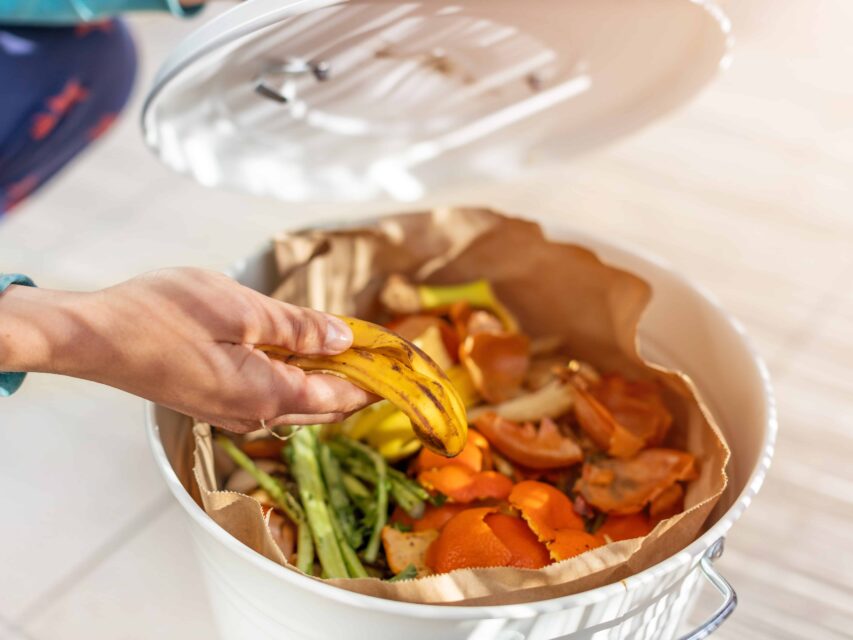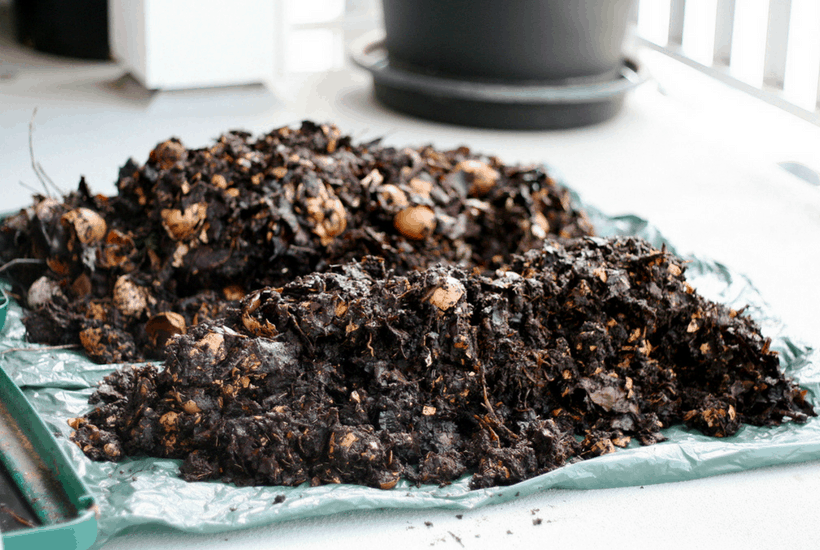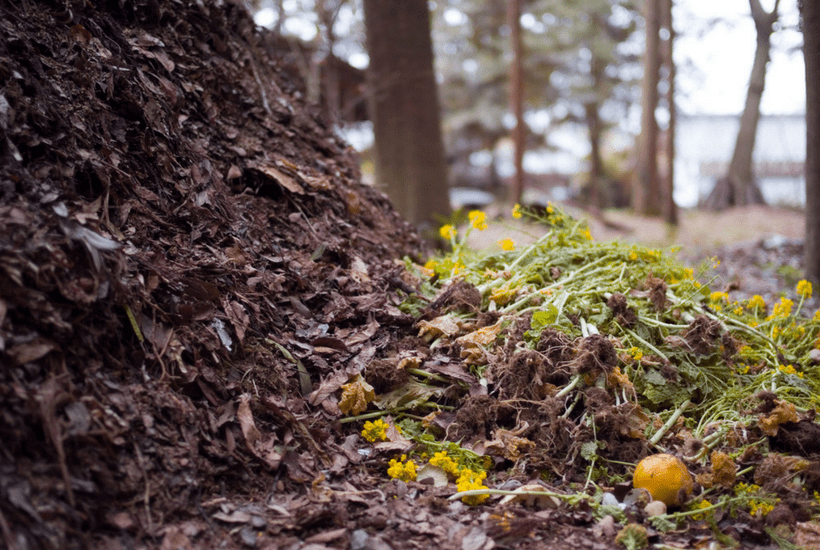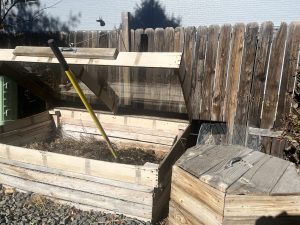I can easily say that the single most intimidating thing to me about zero waste used to be composting. I think part of the issue was this idea that compost just happens (which to my more process-oriented mind sounds like magic). click here for Affiliate Disclosure
Today, I’m a lot less freaked out by composting. I’ve learned what it takes to make it happen at home, in a small urban space – all things I didn’t know were possible when I started!
Last week I discussed the difference between linear and cyclical types of production: the first goes in one direction, leaving waste in its wake, while the second operates within a beautiful closed-loop, keeping everything around it safe from negative effects.
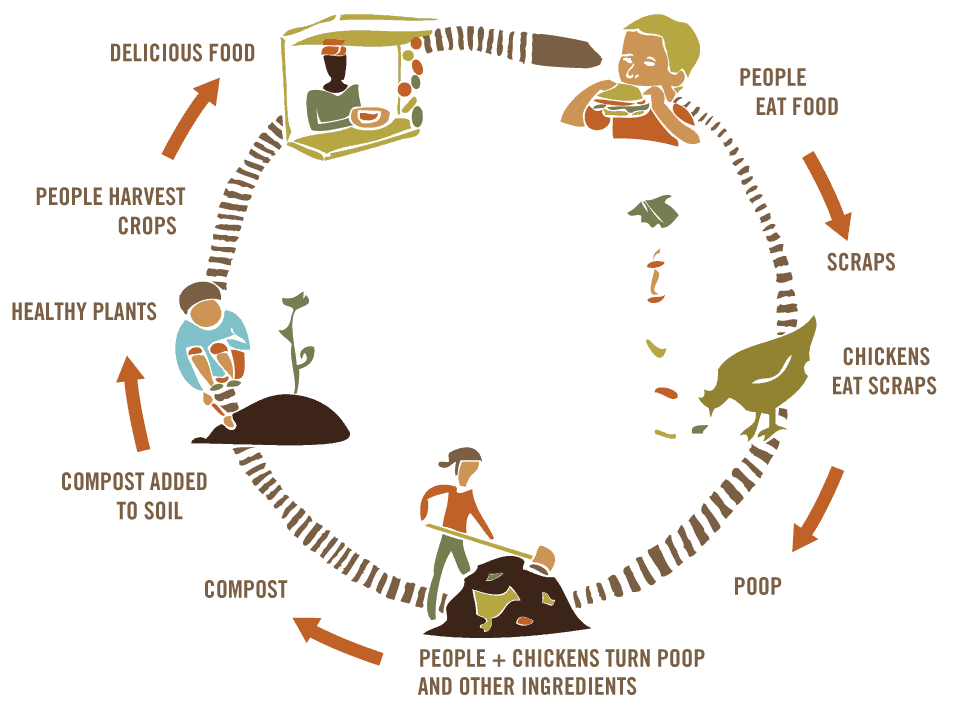

Composting is a cyclical process – one in which food and nutrients go in and food and nutrients come out.
Composting for Beginners
Compost is an organic material that can be added back into any soil to help plants grow. It’s terrific because it takes organic matter that we usually throw away (think food scraps and yard waste) and turns it into something beautiful and enriching to the earth!
Making compost is actually an extremely important process. Food waste and yard waste currently make up something like 20% of everything we throw away. And it turns into a stinking, methane-producing mess if it goes to landfill.
Compost is made up of a combination of two primary ingredients, plus moisture content:
- Browns (carbon-based materials like dead leaves, branches, twigs, brown paper, newspaper – even pizza boxes)
- Greens (nitrogen-based materials like grass clippings, vegetable waste, fruit scraps, coffee grounds)
While any amount of organic material will eventually decompose, most pros recommend you cultivate a 2:1 ratio between the two (slightly more browns than greens) and layer each type in alternation to help the breakdown process. This just makes it all go faster.
Here’s a nice long list of things you can and cannot compost.
How to Compost at Home
Compost in the yard
Toss your compostables on the ground in a trench and all would be well. If you want to do that, go for it! The worms will get busy and create beautiful compost for you, and as long as you bury material deep enough critters won’t be a problem.
Here’s how to do it:
- Select a dry, shady spot for your homemade aerobic compost bin or pile, ideally near a water source.
- Build a simple container to hold your compost together. Google terms like “wire composter” or “high-rise composter” to get ideas.
- Add “browns” and “greens” as they are collected, making sure that larger items are chopped or shredded to aid the breakdown process.
- Moisten dry materials as they are added and bury wet materials like fruit approximately ten inches under the compost pile’s surface. It should feel moist (not soggy) to the touch.
- Turn occasionally with a pitchfork or shovel.
Compost with a worm bin
Many renters adopt a strategy called a worm bin. Worm bins have many advantages for people with limited space and no garden or yard space to speak of. They’re well-contained, don’t require contact with the earth, and (if managed properly) won’t attract pests or rodents or smell bad.
Here’s how to do it:
- Prepare your compost container. You can buy a specialized worm bin or make one yourself! Just make sure it has a lid on both the top and the bottom-side and that it is well-ventilated.
- Shred some newspaper into one-inch strips, soak in water till moist but not dripping, then line your container with half. You’ll want to fill it approximately 1/3 of the way full with this paper.
- Get some red wriggler worms and add them to the bin with a little bit of soil. Set the bin in the sunlight. They will soon begin to burrow into the paper to avoid the sun – crazy!
- Add small chopped up food scraps from daily life and bury them under your remaining damp paper strips. Don’t mix too heavily or you’ll disturb the worms. Just gently burying is fine.
- Place your worm bin in a cool place without a lot of sunshine and continue to add scraps until you have more soil than scraps. Let it sit till the mixture has turned to compost, scoop it out for use, and start over. Just don’t scoop out your worms!
Related Reading: 10 Compost Bins for Apartment Living
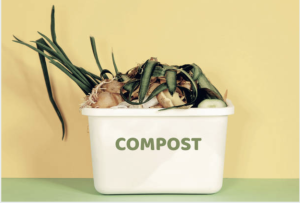

Compost in the freezer (the easy way)
Worm bin not your style? Simply add food scraps and other compostables to a container in the freezer! The material will freeze before it decays, ensuring your kitchen compost stays mess and bug-free. When the container is full you can dump it at a community composting facility.
Here are some different composting bins for home use
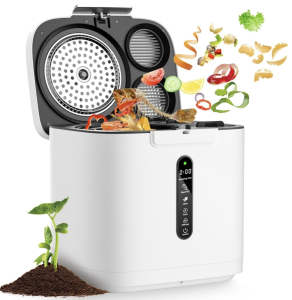
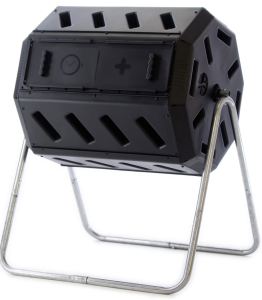
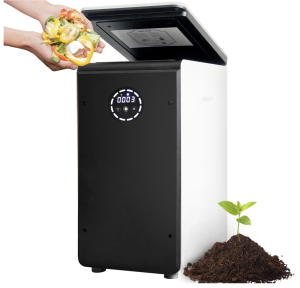
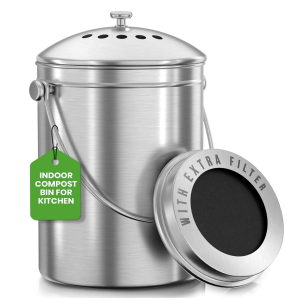
Do you compost at home? Share your tips!

